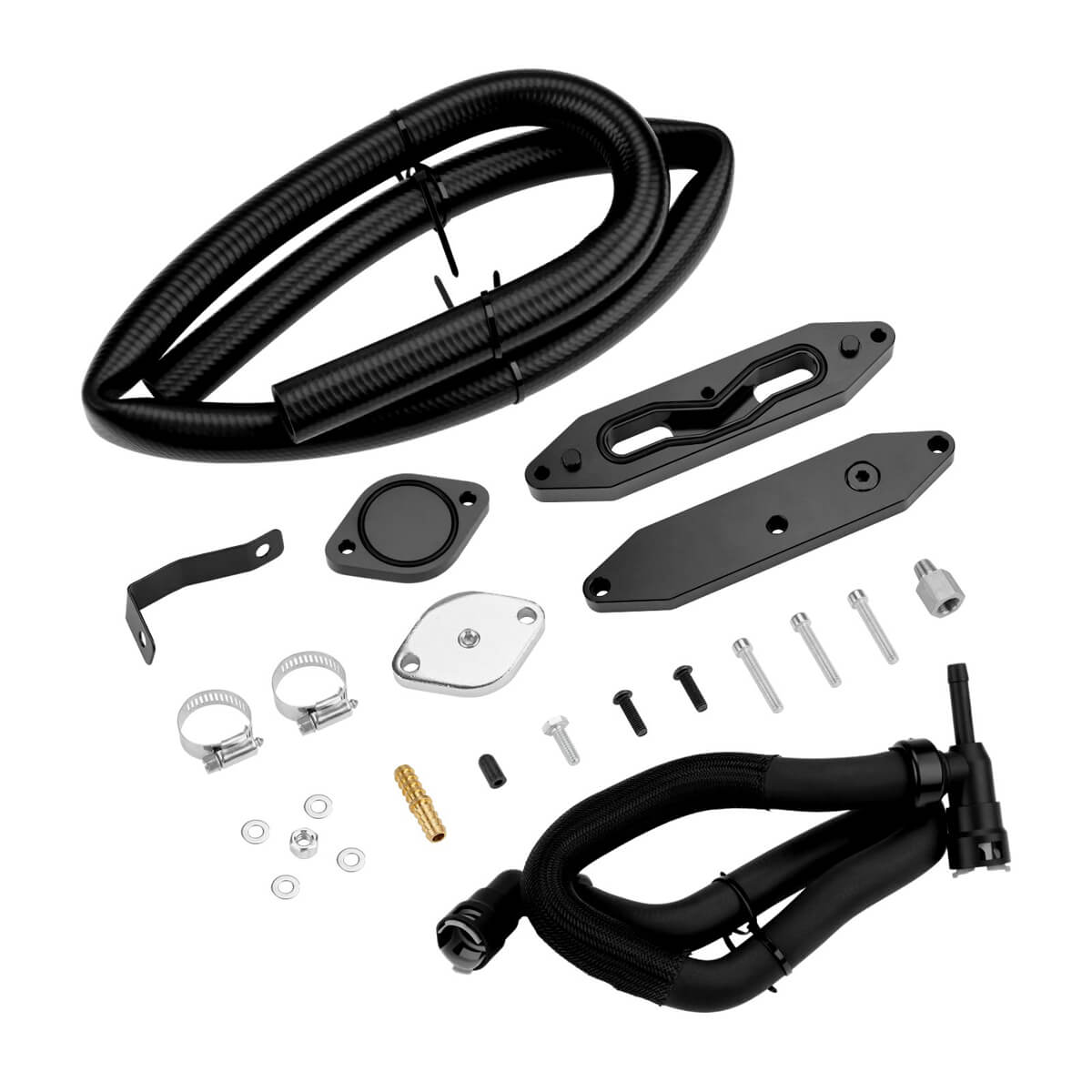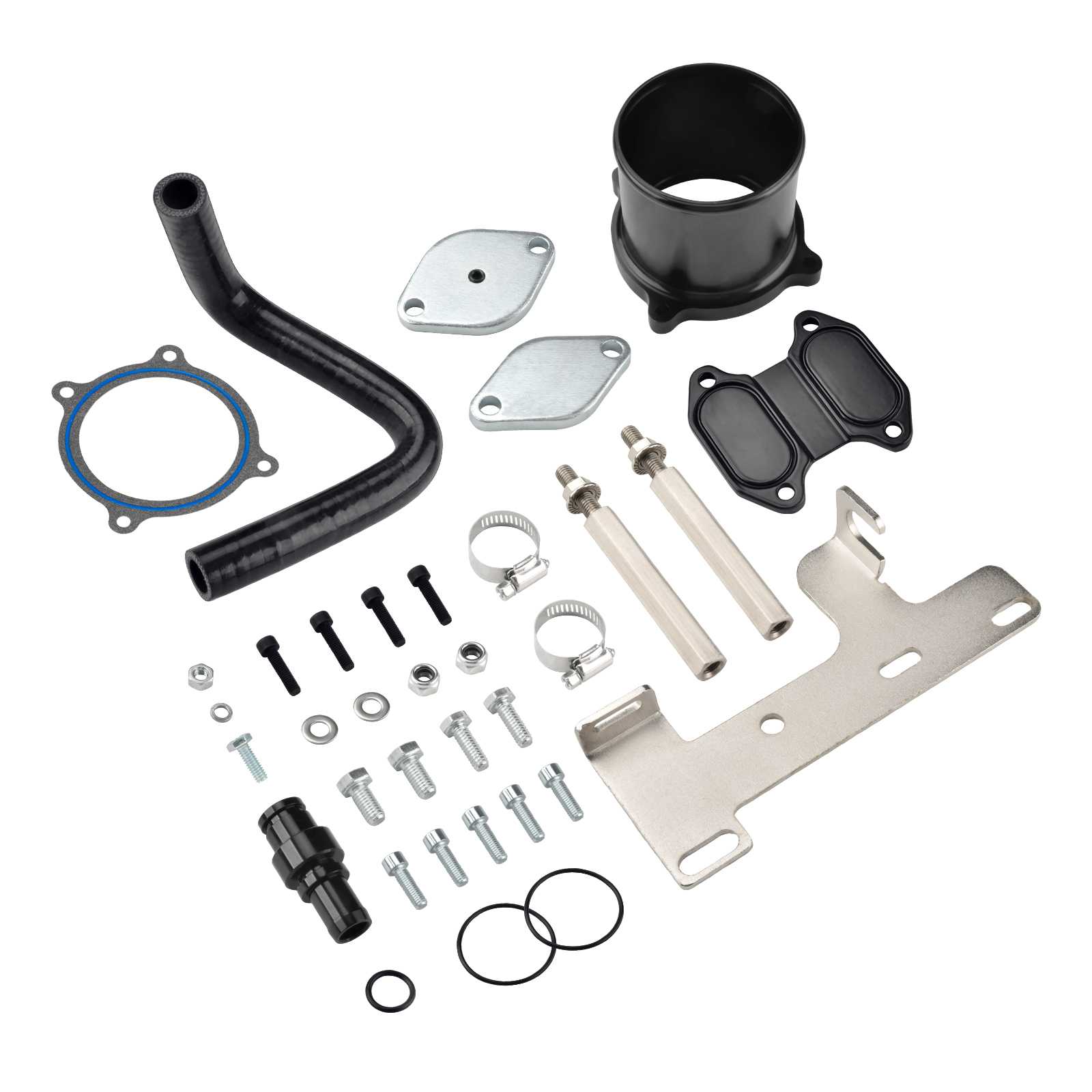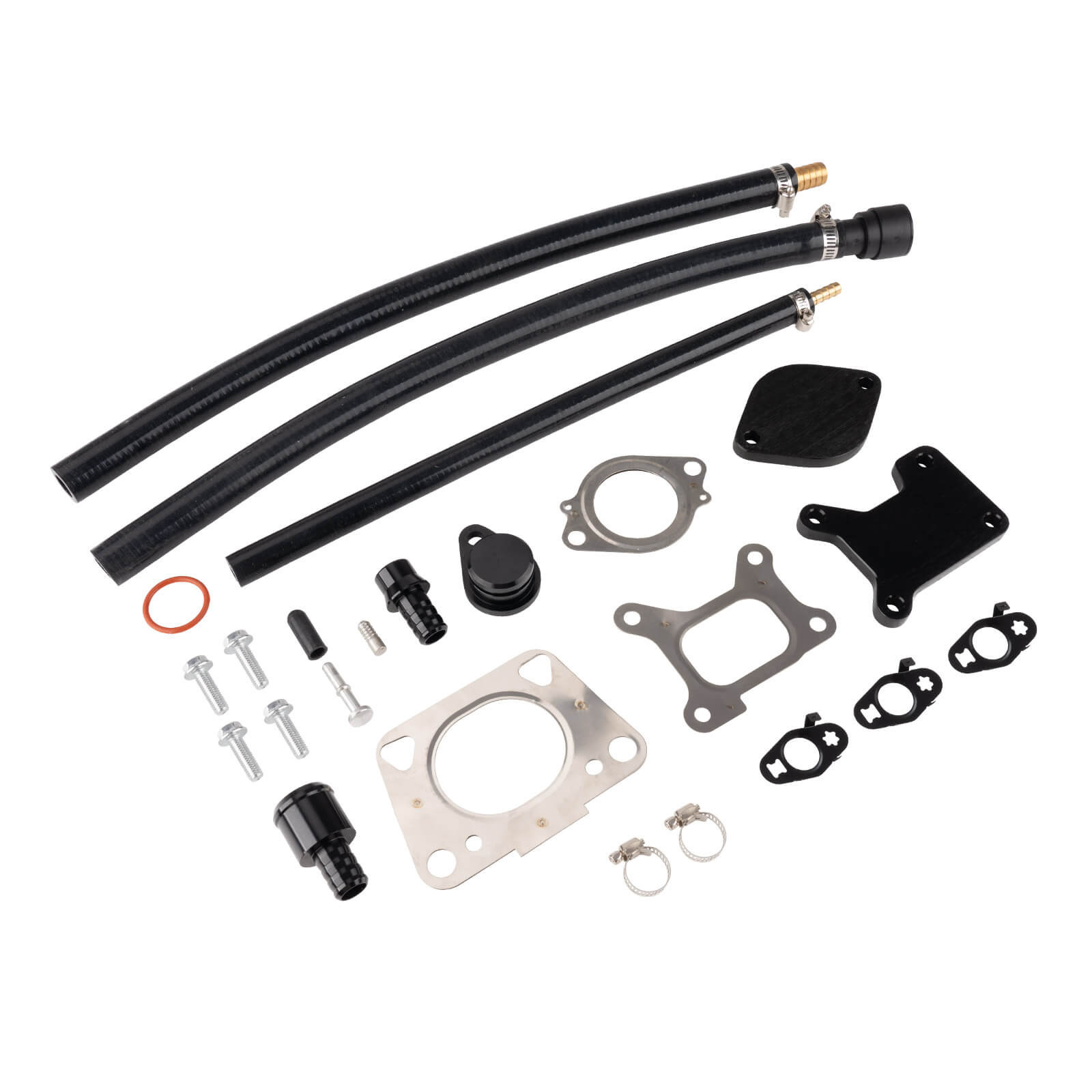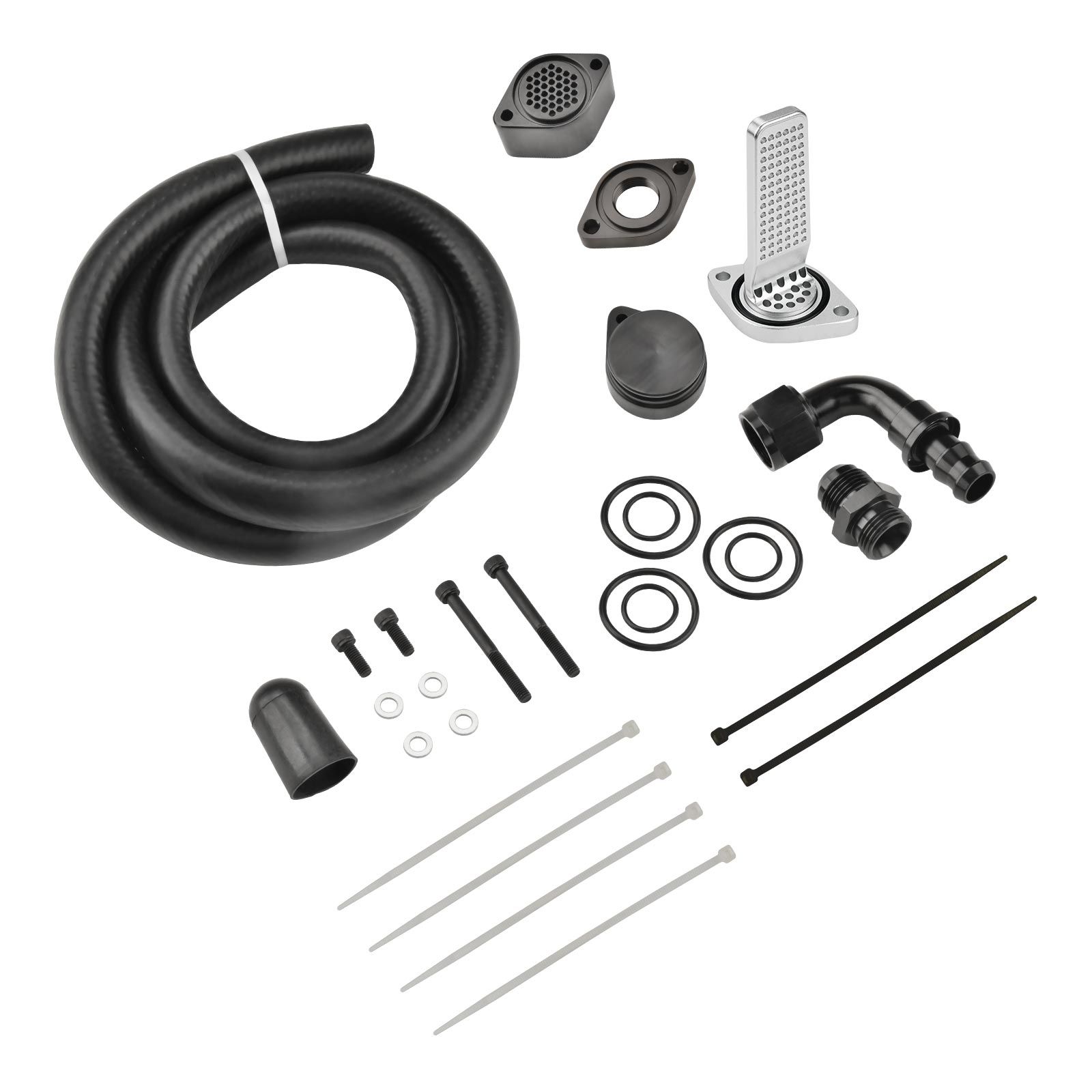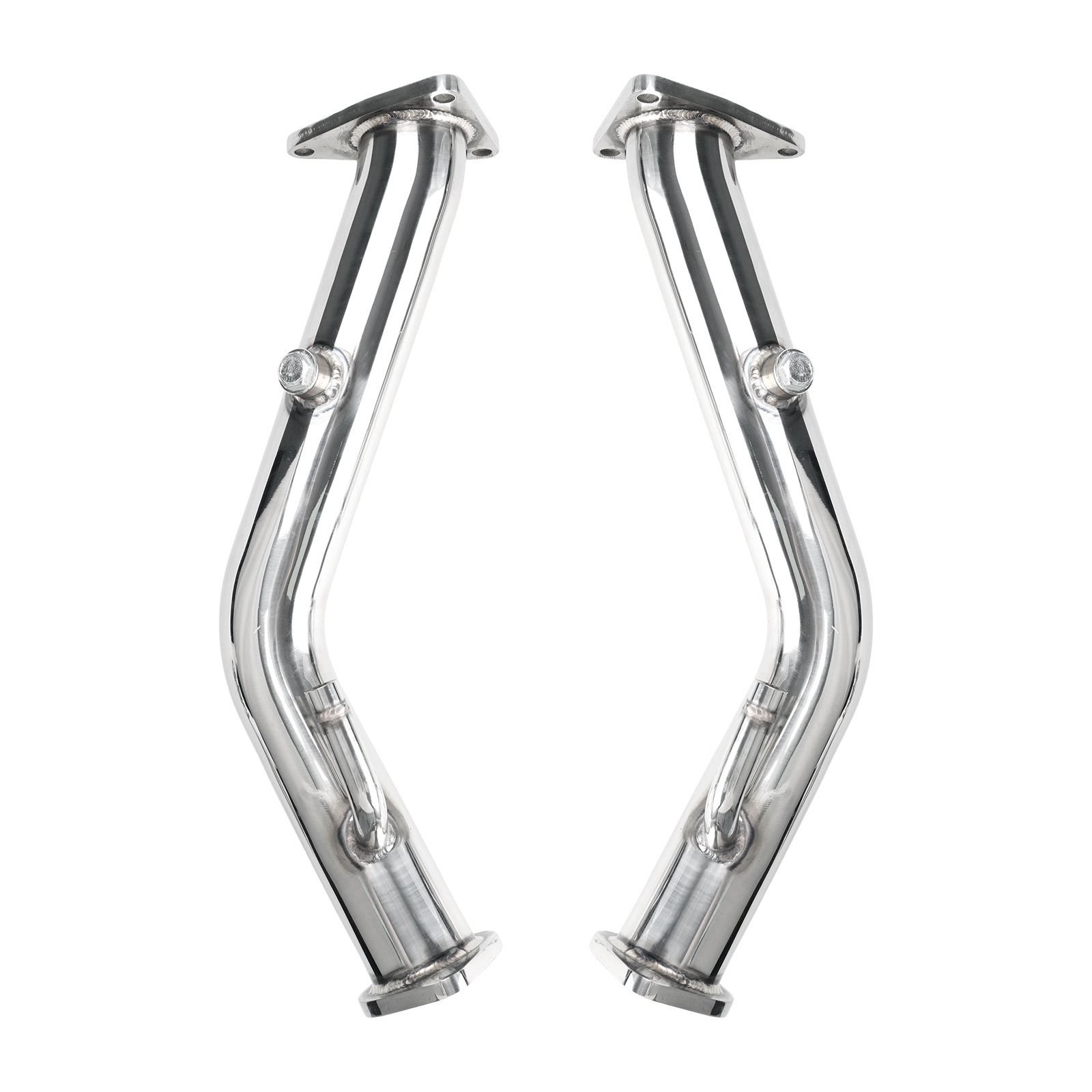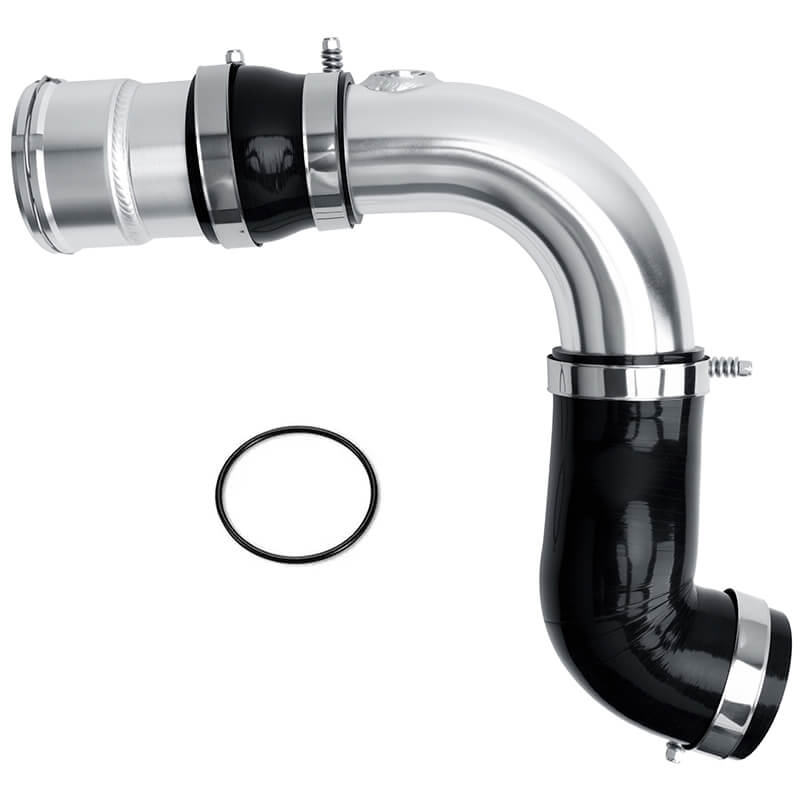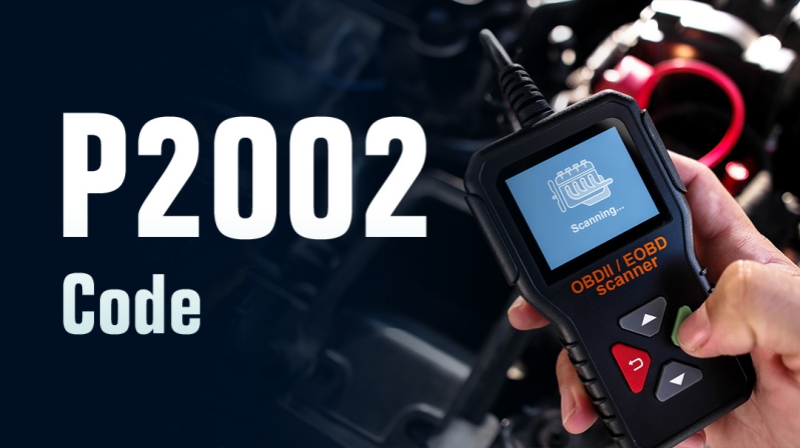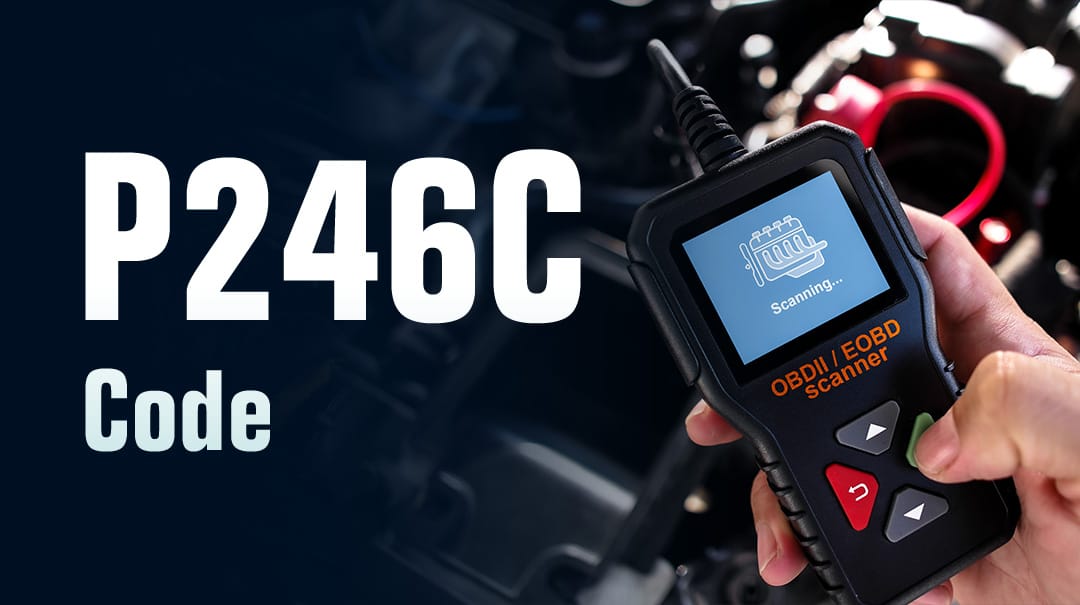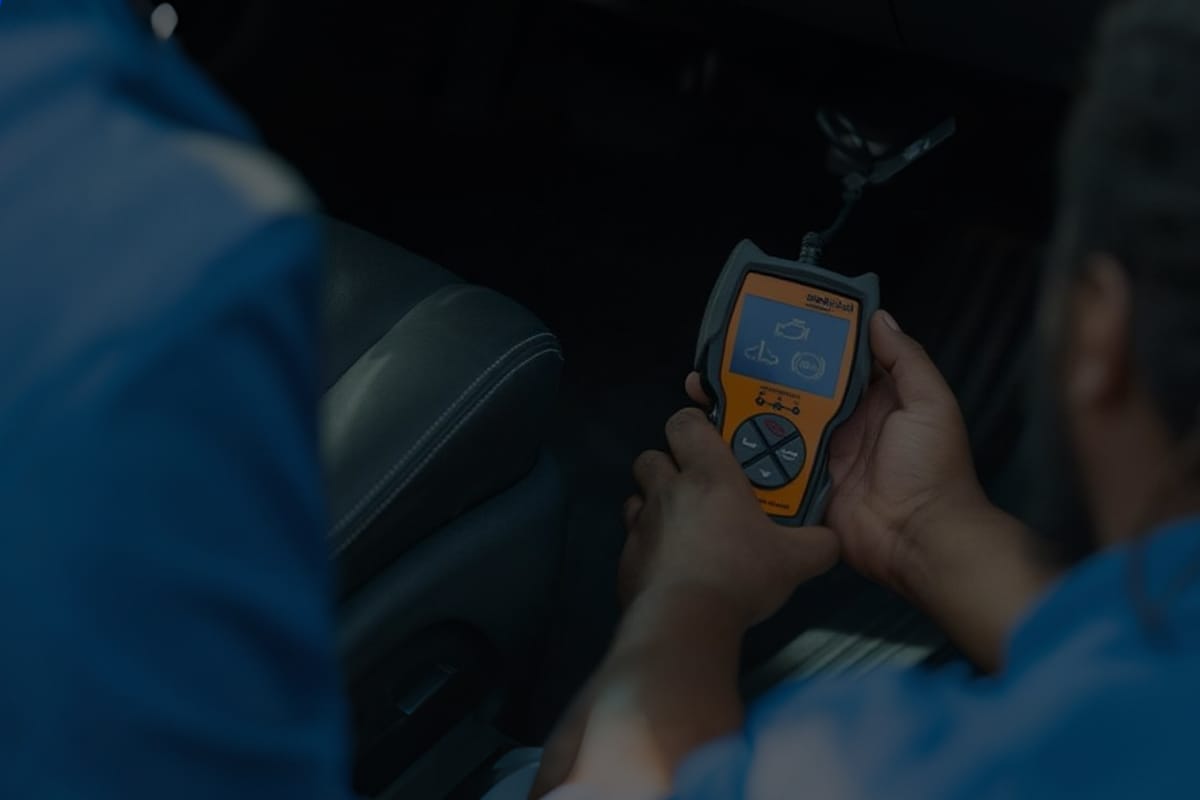Imagine cruising in your vehicle when suddenly the check engine light blinks on. You scan the system, and mysterious code P245E appears on your screen.
"What does it mean? Is my vehicle still safe to drive with the P245E code ? And most importantly, how much money will I be burning to get it fixed?"
These are the questions that everyone encounters in this situation. In this article, we will cover all the burning questions you have in your mind.
✅Common causes include sensor or wiring issues, contaminated Diesel Exhaust Fluid (DEF), exhaust leaks, and blocked DPF components.
✅Early diagnosis, such as checking sensors, wiring, DEF quality, and regular maintenance can help prevent major repairs and ensure continued engine reliability.
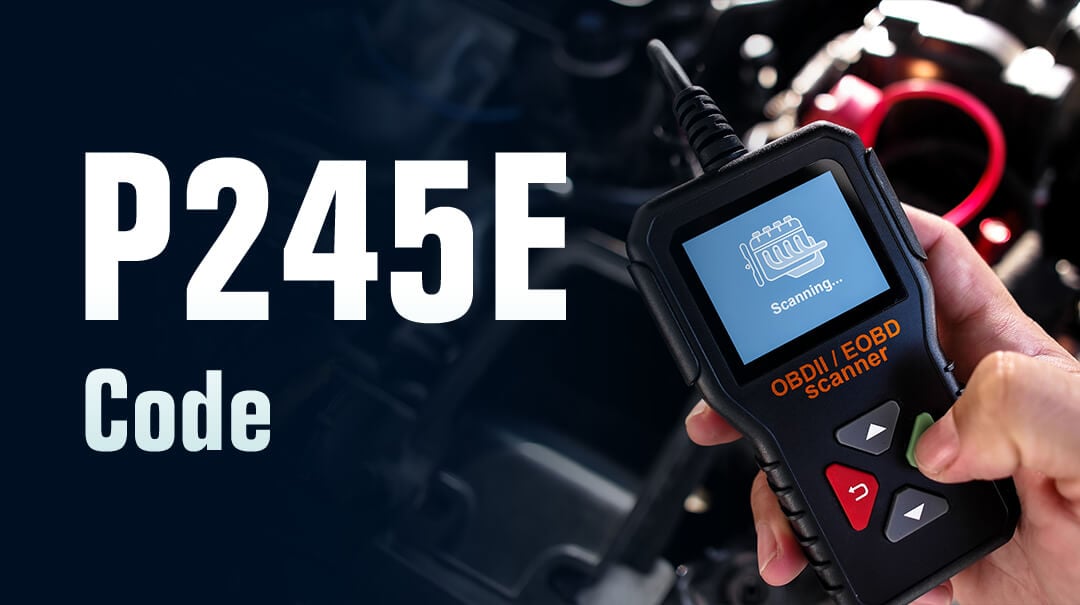
What Does P245E Mean?
Code P245E means there is an issue with the Diesel Particulate Filter (DPF) in the Pressure Sensor 'B' Circuit . In simple words, the Powertrain Control Module (PCM) (or Engine Control Module {ECM}) has detected a fault in the sensor circuit that monitors pressure around the second differential pressure sensor on the DPF system.
Diesel engines' DPF traps soot and particulates to reduce harmful emissions. The sensor 'B' helps monitor the extent of exhaust back pressure, which is critical for controlling filter regeneration and engine efficiency. When this sensor's signal falls outside acceptable minimum or maximum thresholds during idle or part-load conditions, the PCM flags code P245E.
Common Symptoms of P245E
When the P245E code occurs, drivers may start noticing some (or a combination) of these symptoms:
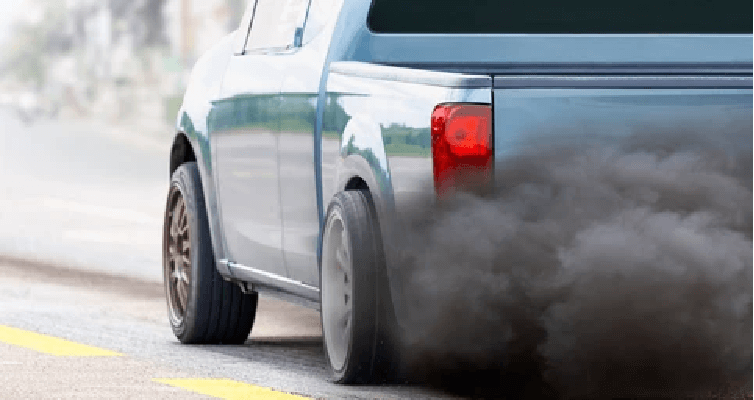
- Check Engine Light (CEL) stays on all the time. Well, this is the most common and obvious warning. But since there could be many reasons that can trigger the check engine light, never use it as a way to confirm this.
- Black smoke coming from the exhaust, often due to incomplete combustion or faulty regeneration.
- Some drivers often report reduced engine performance. It may include irregular acceleration (or difficulty maintaining speed).
- Higher transmission temperature.
Possible Causes of P245E
This code often stems from several linked problems:
- Defective or damaged DPF pressure sensor 'B' or its wiring harness, leading to erratic or no signal.
- Contaminated Diesel Exhaust Fluid (DEF), impairs the aftertreatment system's ability to maintain appropriate temperatures for soot oxidation.
- Leaking or damaged exhaust system components, causing abnormal pressure readings and exhaust flow issues.
- Clogged or faulty Diesel Particulate Filter, hindering normal exhaust pressure dynamics.
- Faulty Powertrain Control Module (PCM) or Engine Control Module (ECM), which misinterprets sensor inputs and generates erroneous codes.
- Malfunctioning Variable Camshaft Timing (VCT) solenoid or other related actuators interfering with engine timing and emissions control.
Each of these impacts the vehicle's exhaust pressure monitoring, causing sensor readings to move outside acceptable ranges and triggering code P245E.
How to Diagnose P245E Code
You can diagnose the P245E code by using a combination of electronic and physical testing. Here's a quick step-by-step process:
Step 1: Scan for Codes and Freeze Frame Data
Use diagnostic equipment to confirm the presence of the P245E fault code and record any other OBD-II codes; this helps to identify the affected system.
Step 2: Inspect the DPF Pressure Sensor 'B' and Wiring
Carefully check the pressure sensor 'B', its wiring harness, and connectors for corrosion, physical damage, or loose connections, as these often cause erroneous readings.
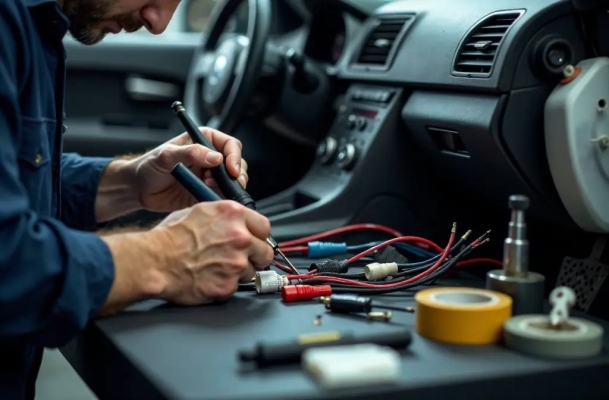
Step 3: Check Diesel Exhaust Fluid (DEF) Quality and Level
Assess whether the DEF is contaminated or low, since poor DEF quality can increase emissions-related problems and trigger fault codes.
Step 4: Test the Sensor Electrical Circuit
Use a multimeter to check for open circuits, short circuits, or incorrect voltages in the pressure sensor's wiring to rule out electrical faults.
Step 5: Inspect the Exhaust System
Examine the exhaust system near the sensor ports for leaks or damage, as these can alter pressure readings and hinder proper DPF operation.
Step 6: Examine DPF Condition
Look for excessive soot or ash buildup in the DPF, which may require either cleaning or full replacement to restore normal function.
Step 7: Review Engine Performance Data
Monitor data such as exhaust temperature and DPF regeneration cycles for clues suggesting deeper issues within the emissions system.
Step 8: Consult Vehicle-Specific Repair Manuals
Refer to factory or repair manuals for your specific vehicle when dealing with complex systems, ensuring accurate sensor locations and proper testing procedures.
How to Fix P245E Code
The good thing is, you can work on repairs without any professional help if you are sure that this is a P245E-related issue. Here's what you can do:
- Replace or repair defective DPF pressure sensor 'B' or harness. Sensor replacement resolves many P245E cases.
- Change polluted DEF to restore proper SCR function.
- Get the exhaust leaks repaired to maintain optimal pressure dynamics.
- Clean or replace the DPF if blocked or faulty, restoring normal filtering and pressure.
- Address PCM/ECM faults by updating the software. In some cases, module replacement is required, especially when sensors are misreading.
- A
DPF delete kit can remove the DPF system, immediately resolving a P245E fault code. However, please be sure to check the laws and regulations in your area. The
EPA stipulates that vehicles that have been modified (such as those with DPF removed) cannot be driven on public roads.
View also : What Is DPF Delete
Vehicles Commonly Affected by P245E
Modern diesel vehicles with advanced emissions controls frequently encounter P245E, especially those equipped with dual differential pressure sensors for the DPF:
| Make/Model | Notable Issues | Years |
| Ford Transit Diesel | Laminar warning lights indicating P245E; sensor faults | 2016–2025 |
| Mercedes-Benz Diesel | Sensor and DEF system sensitivity | 2010–2025 |
| Volkswagen Group | Complex DPF systems with multiple sensors | 2012–2025 |
| Heavy-Duty Trucks | Sensor harness wear and SCR component faults | Various years |
Drivers who frequently drive short distances or use contaminated diesel exhaust fluid (DEF) are particularly prone to problems. We recommend paying close attention to manufacturer updates and service bulletins and regularly checking the system to reduce the likelihood of malfunctions.
Repair Cost Estimate for P245E
| Repair Item | DIY Cost (USD) | Professional Cost (USD) | Repair |
|---|---|---|---|
| OBD-II Code Reading | $0 - $75 | $80 - $150 | Initial diagnosis |
| Pressure Sensor Replacement | $75 - $200 | $150 - $350 | Sensor and harness repair/replacement |
| DEF Replacement | Varies | $300 - $1,000+ | Dependent on leak location & severity |
| DPF Cleaning or Replacement | $100 - $1,000+ | $600 - $4,000+ | Cleaning is cheaper than replacement |
| PCM/ECM Repair/Update | Rare, Varies | $500 - $1,500+ | Usually dealership service required |
Prevention Tips for P245E
While you can encounter a P245E code even when you are doing everything right, there are still ways that you can use to prevent this from happening. Or maybe at least to reduce the chances of coming across this code:
- Always use
high-quality diesel exhaust fluid (DEF) and check its quality regularly. This will protect the emission control system and maximize vehicle efficiency.
- You should avoid frequent short-distance driving, which prevents DPF regeneration.
- Always perform scheduled maintenance (including regular oil and filter changes).
- Inspect DPF pressure sensor circuits regularly
- Ensure exhaust system integrity, addressing any leaks or damage promptly.
- Go on drives at highway speeds occasionally, which ultimately promotes DPF regeneration.
FAQs about P245E Code
Conclusion
The P245E fault code indicates a problem with your vehicle's diesel particulate filter (DPF) system, specifically the pressure sensor B circuit. Possible causes include a faulty sensor, a wiring problem, or a clogged DPF that requires cleaning. Using high-quality diesel exhaust fluid (DEF) and performing regular maintenance are the best ways to prevent this fault code.
If the fault code recurs, you may consider removing the DPF system. However, it is important to note that this is illegal on public roads and will trigger emissions violation penalties. This is only applicable to modified and off-road vehicles.












